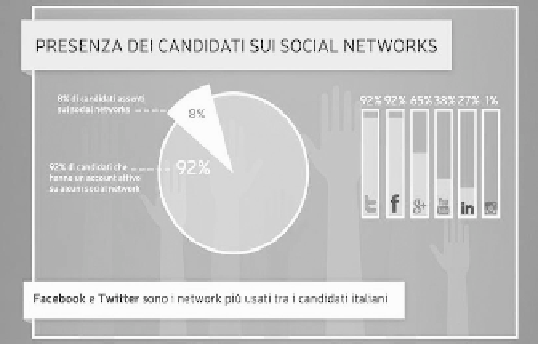Information Technology Reference
In-Depth Information
Figure 4.1
Political candidates on social network, 2013. (Courtesy of Augure.)
another broad online public consultation concerning the spending review process.
Not accidentally, during the last elections, held in early 2013, the large majority of
candidates opened an account on social networks (Figure 4.1) aiming at engaging
with discussion and confrontation with citizens.
4.3 Success of Web-Based Participation
However, as is the idea at the basis of this chapter, not every practice of web-based
participation has been successful. Public institutions experimenting with online
participatory democracy initiatives have faced several problems. In frequent cases,
the “public” that has participated in online consultations has represented a very
narrow slice of the entire citizenry (e.g., according to the report on the 2013 online
consultation on constitutional reforms, participants to the consultation were 78%
more likely to have a PhD degree than the average Italian). Not uncommonly, ordi-
nary citizens (prominently from remote areas) have complained because the lack
of direct access to the web has left them excluded from online consultations. This
could be explained by the fact that, whereas younger citizens show familiarity with
use of the Internet, older or less technologically savvy people may be less comfort-
able with it and thus feel discouraged from participating.
The problem does not stem from just the age gap but more generally from the
lack of digital culture within the Italian population. According to
Wired
magazine,
62% of Italians have never interacted online with public administrations. Another
52% still do not know what “e-democracy” or “digital agenda” means. Similar
figures are presented in the 2014 Report from Observa Science Society (2014):
3.7 of 10 Italians (37%) have never used the Internet or a personal computer (the
European average is 20%).

Search WWH ::

Custom Search